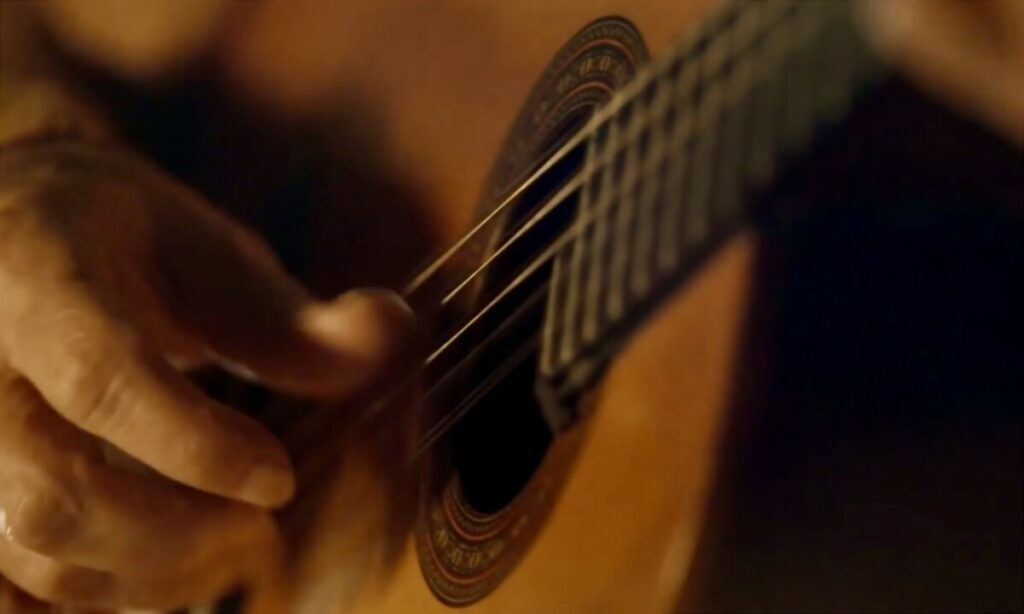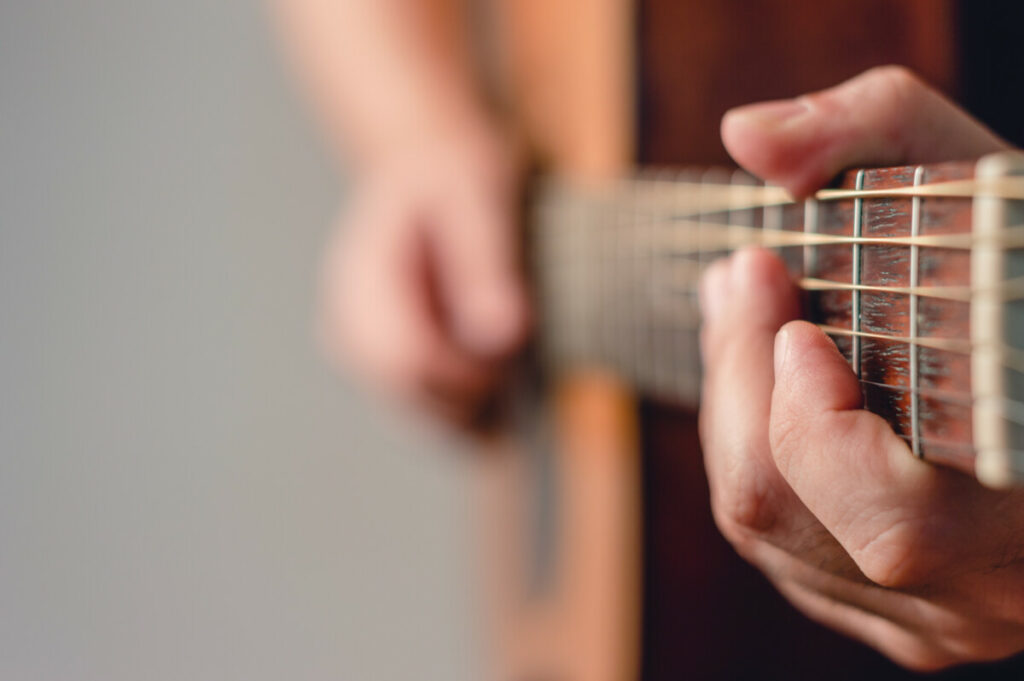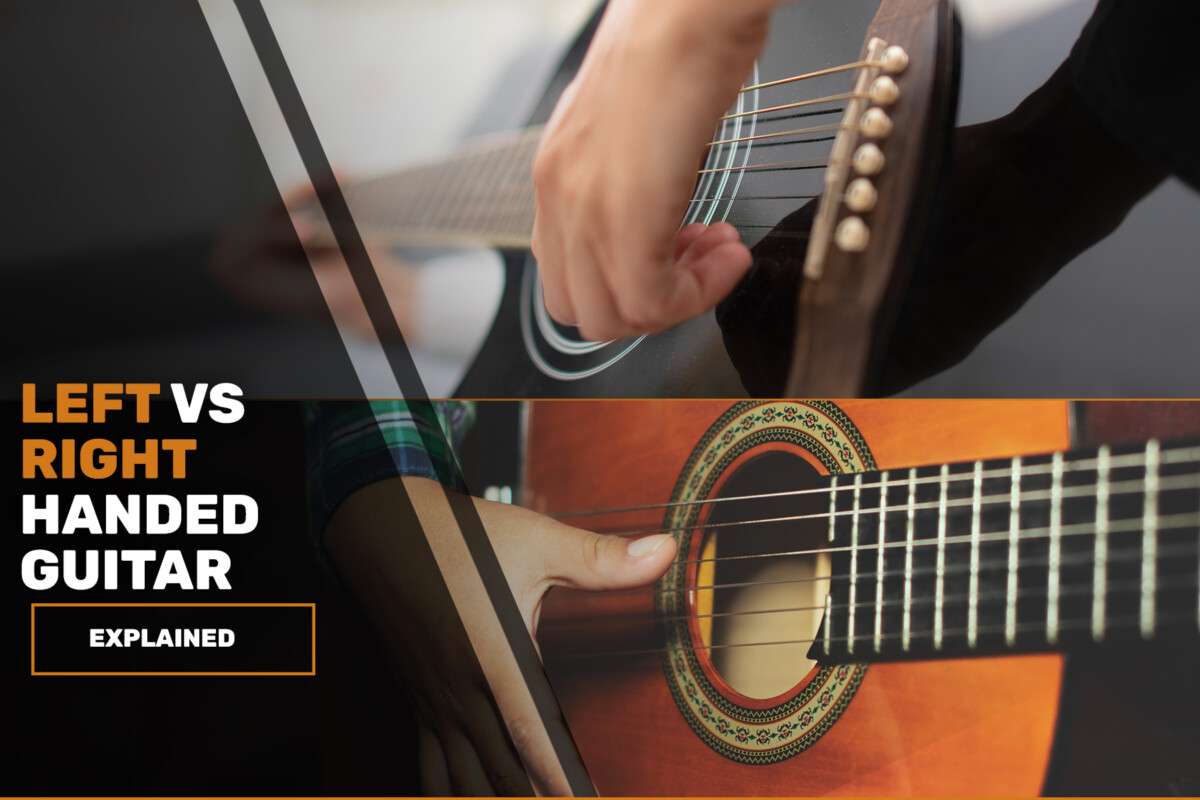Even though the majority of people are right-handed, at least about 10 percent of the world’s population is left-handed.
As left-handed people might struggle with scissors, peelers, or other items, is this the case with guitars? What are the differences between left and right handed guitars? In this article, we provide an answer to this question and more, so continue reading.
Key Takeaways
- The main difference between left vs right handed guitars is in the orientation.
- The most notable differences are the order of the strings and placement of the pickboard.
- You can notice differences in the guitar nut, strap peg and fretboard inlays placement.
- The saddle of an acoustic guitar is angled differently in left and right handed guitars.
- By making some adjustments and restringing the guitar left handed people can play a right handed guitar.
Table of Contents
Left vs right handed guitar – How do they differ?
The main difference between left and right handed guitars is the orientation. Meaning that with left handed guitars your left hand is strumming and the right one is on the fretboard, while on right handed guitars, it is the opposite.
Both left and right handed guitars are identical in their build, the difference is in the layout as left and right handed guitars are like mirrors to each other.
Differences: Left and Right-Handed Guitars

Besides being opposites to each other, these guitars have several differences that we will go through in the following paragraphs.
Strings
The first and easily notable difference between left and right handed guitars is the direction of the strings. When you take a look at the guitar vertically and the thickest string is on the right, then this guitar is left handed. But if the thickest string is on the left, then it is a right handed model.
However you can string the guitar upside down or the other way around. Because of this, it might be harder to note the differences. But there are other signs that can tell you of course.
Pickguard
What you can take a look at is the pickguard. On left handed guitars the pickguard is placed on the left to prevent scrapes from the guitar pick when strumming. When it is about right handed guitars then the same pickguard will be on the right side.
When you try to string the guitar, it can be done upside down, but in this case the pickboard will look weird so that’s how you can notice the difference. But what happens if the guitar doesn’t have a pickboard?
Guitar nut
If the guitar doesn’t have a pickboard and you can’t notice the difference between the strings, you can take a look at the nut. The nut is a small strap of material near the headstock at the crown of the guitar neck. It has 6 slots and is designed to hold strings in place.
Because of the fact that each slot of the nut is of different width according to the gauge (thickness) of the strings, you will notice a difference. If the thickest string doesn’t fit the slot and the thinnest one rattles because the slot is too wide, then this could be a sign that the guitar has been strung upside down.
This way you can notice the difference, but not if the nut of the guitar has been flipped 180 degrees or a new one has been installed. In this case, it might not be accurate.
Strap peg
Another sign could be the position of the strap peg which is a metal knob attachment that you can slot your guitar strap over.
On most guitars the peg will be in the center of the and the other on the top. But if the front strap peg is on the bottom half of the body then the guitar has likely been flipped (is left handed). Keep in mind that in some cases, even this method might not be reliable.
Fretboard inlays
There are fretboard inlays on most guitars which are little white dots placed on the neck of the guitar to help you be aware of which fret you are playing.
Another thing you’re going to notice in left vs right-handed guitars is the side markers that are placed on either side of the fretboard on top.
These side markers are oriented towards you and guide you better at locating the fret positions in an easier way. That way, you won’t be required to look at the neck while playing.
Well, these side fretboard inlays are placed on different sides on left and right handed guitars. If these inlays are more on the top side then it is a right handed guitar, but if they are towards the bottom then your guitar is left handed.
Saddle
The saddle is a piece of material (bone, plastic) attached on top of the bridge where the strings sit. It can be found in acoustic guitars and is used to set the intonation and transfer vibrations from the strings to the body.
To set the right intonation, the saddle is placed at an angle to alter the strings length. If you take a closer look at an acoustic guitar you will notice that on standard (right handed) guitars the saddle is at an angle so that the thickest string has the longest length.
As the direction of this angle differs on left and right handed guitars, if the saddle is angled the opposite way then it means it is a left handed guitar.
Can left-handed people play a right-handed guitar?

Yes you can, if you restring your guitar by switching the strings and making some adjustments. But the guitar may not feel right so it could be better to just buy a left handed guitar.
However, if you have a regular right handed guitar and don’t want to buy another one, it is absolutely fine to play that one, just upside down. There are even famous guitar players who use this method of playing such as Eric Gales.
You might find it a bit harder, but playing upside down is an interesting method to try with which you will be able to play any kind of guitar even if it is right handed.
If you take your guitar strings and place them in another order according to a left handed guitar then you will be able to play a regular right handed guitar just fine.
Doing this as a beginner you will be able to learn, but it might be a bit confusing at first because there isn’t much learning material for playing left handed as most tutorials are for right handed guitars.
Final thoughts
Even though guitars are the same in their build, there are differences in the layout in left and right handed guitars. To figure out how they differ you can notice the placement of your guitar strings, pickguard, guitar peg, side fretboard inlays and the saddle (in acoustic guitars). No matter what kind of guitar and playing style you have, the most important thing is to keep on practicing.

